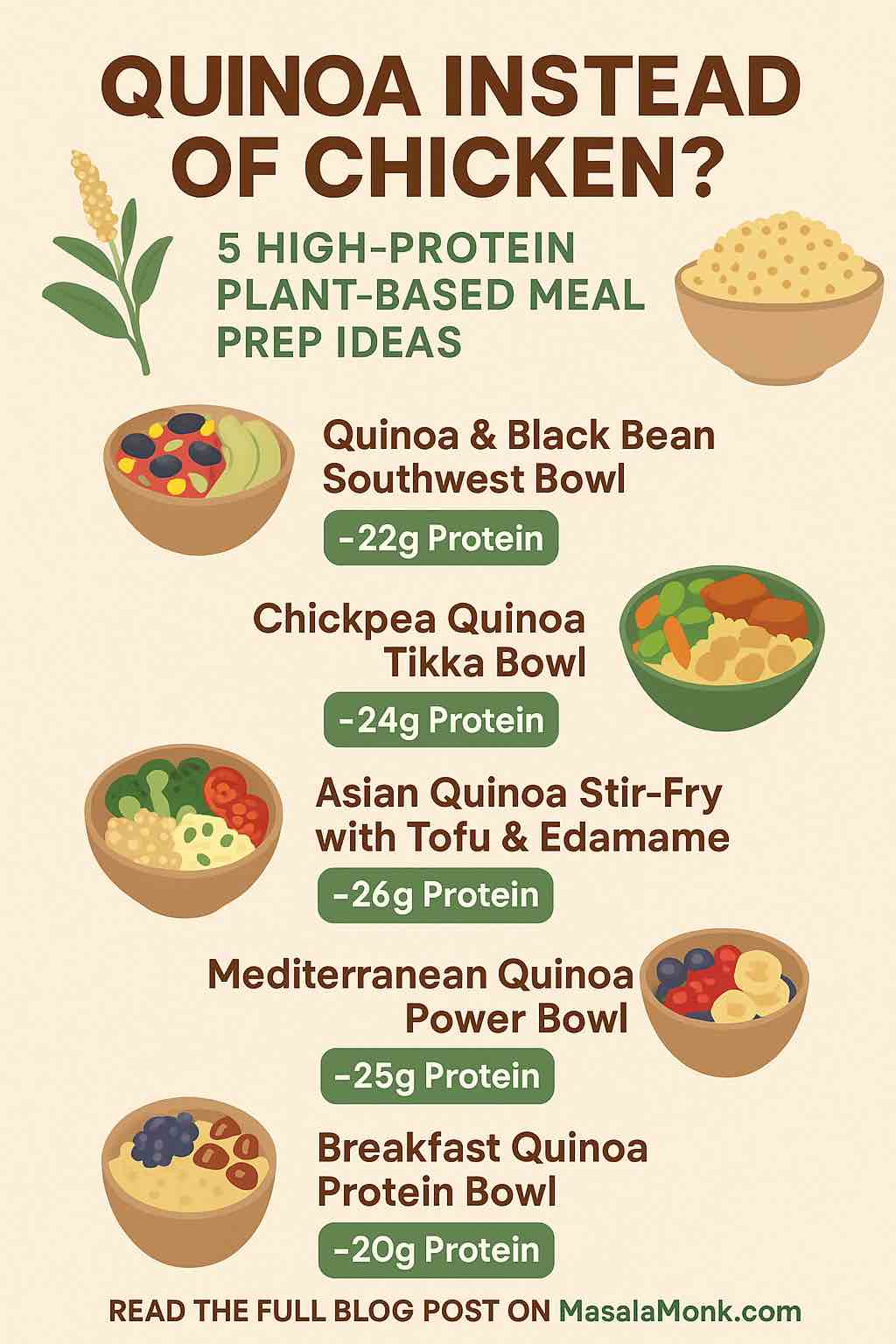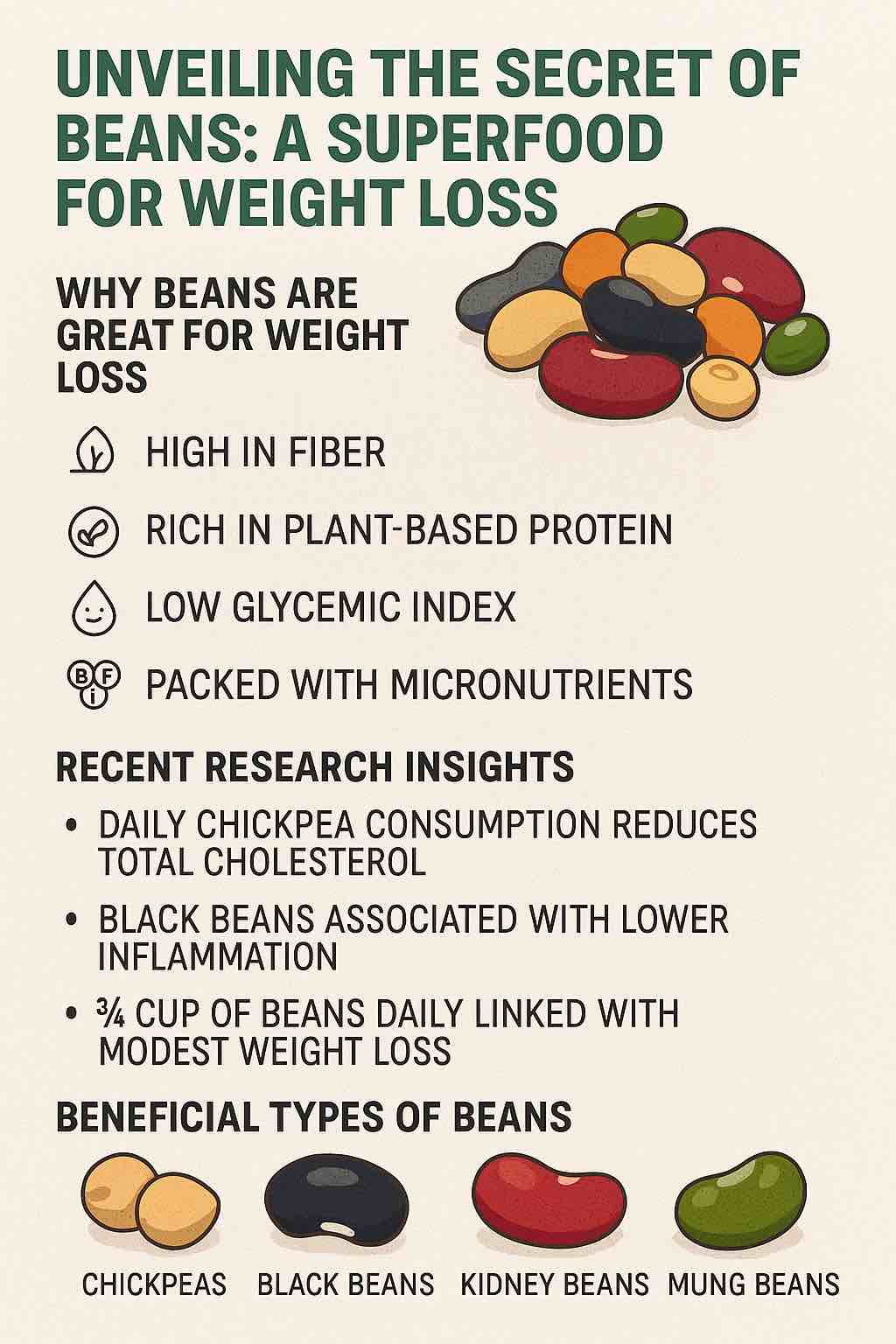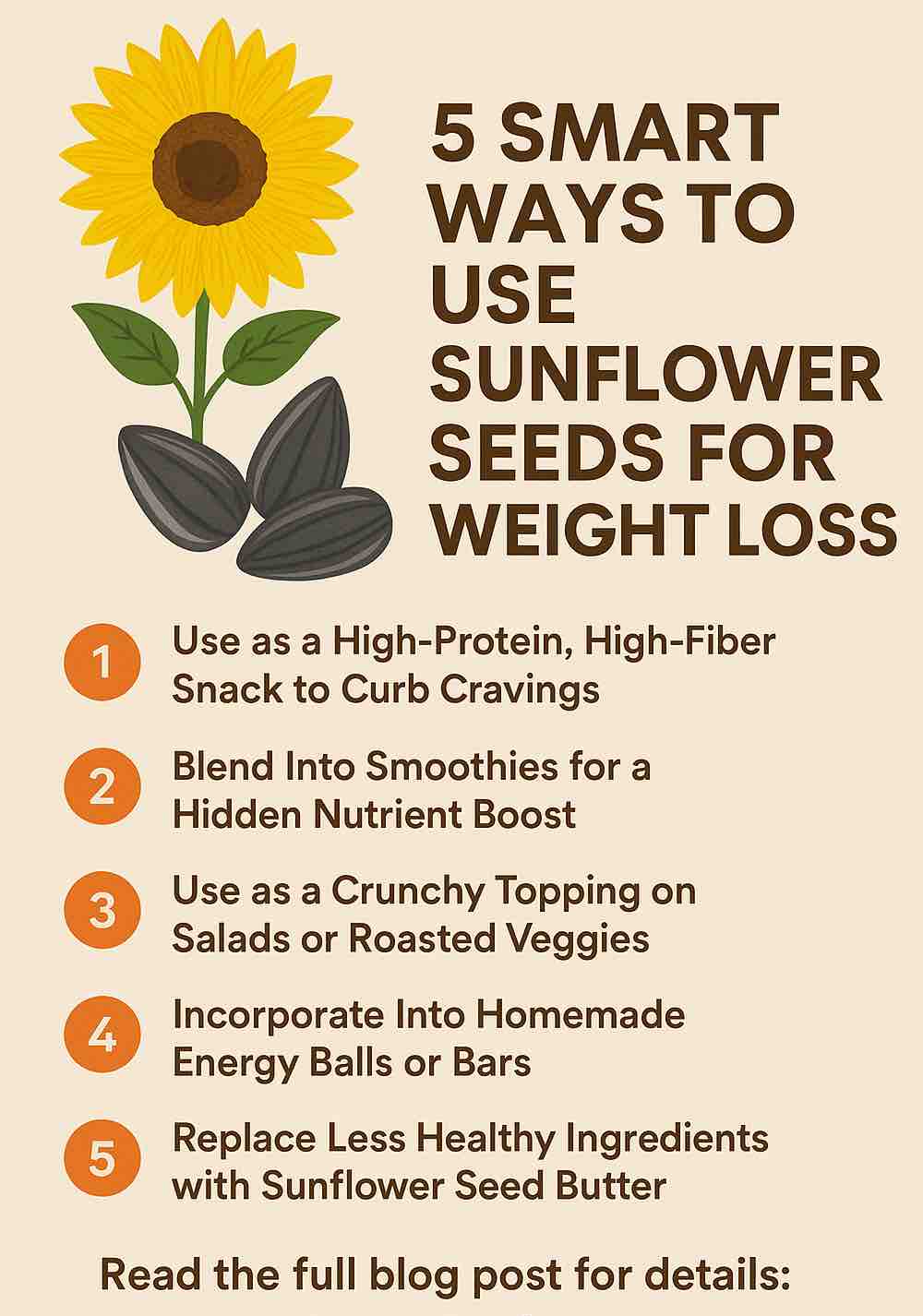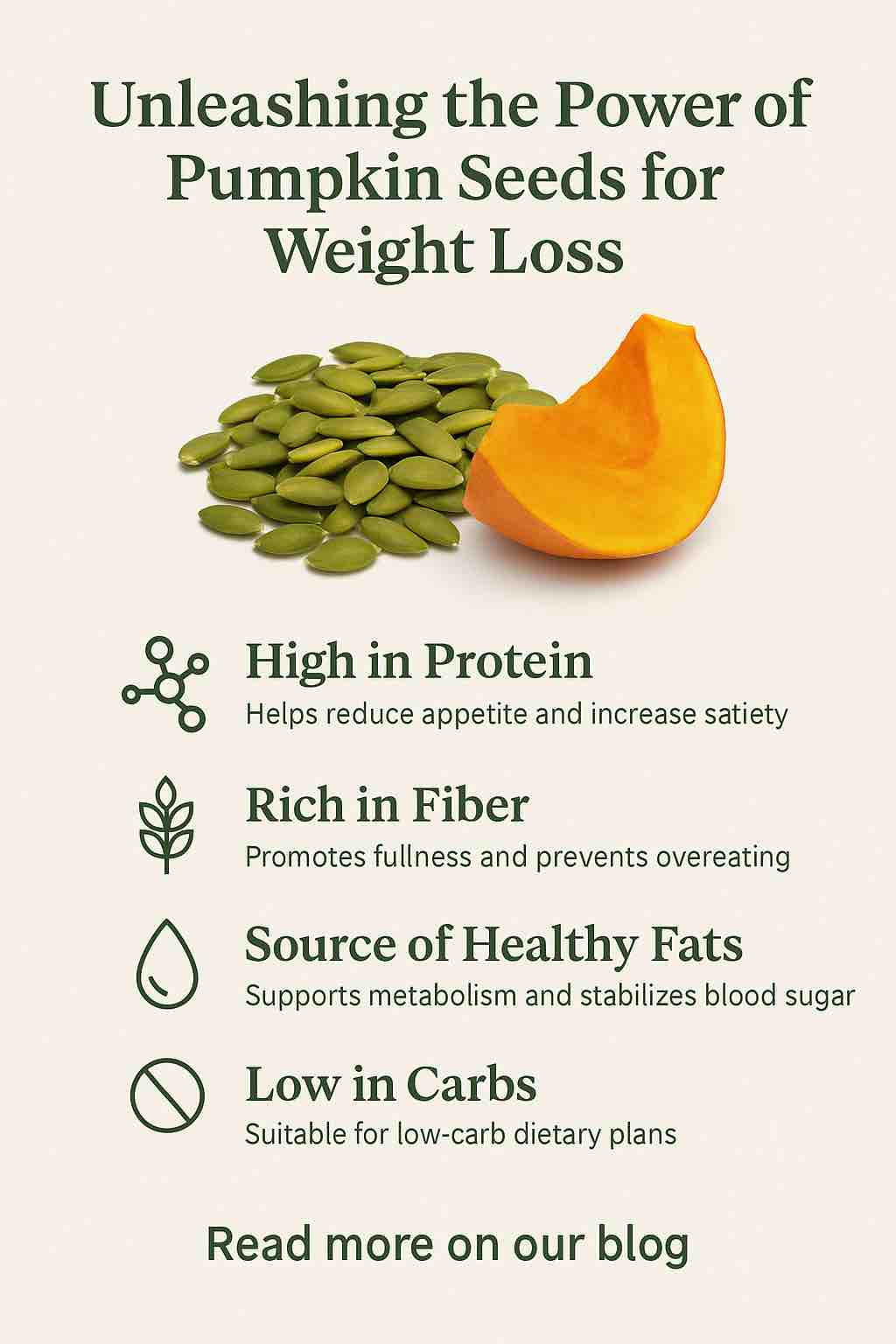
Ditching meat doesn’t mean sacrificing protein. Meet quinoa — your new plant-based powerhouse.
🧭 Why Replace Chicken with Quinoa?
When we think of high-protein meals, chicken breast often dominates the conversation. But for those seeking a plant-based, sustainable, and gut-friendly alternative, quinoa is the underrated hero. While not as protein-dense by weight (cooked chicken has ~31g per 100g vs. quinoa’s ~4.4g), quinoa is a complete protein, offers complex carbs, and has an unbeatable ability to pair with other proteins for a balanced meal.
What makes quinoa ideal for meal prep?
- Stays fluffy even after refrigeration or freezing
- Cooks in 15–20 minutes
- Versatile: works in savory bowls, salads, and even breakfast
- Naturally gluten-free, fiber-rich, and easily digestible
🥗 The Protein Strategy: Quinoa + “Companions”
Quinoa alone isn’t enough to hit 25–35g of protein per meal. But combined with legumes, tofu, tempeh, seeds, or nut-based sauces, it becomes the perfect foundation for high-protein meals.
Let’s dig into five meal prep-friendly ideas that prove plant-based doesn’t mean protein-poor.
1. 🌮 Quinoa & Black Bean Southwest Bowl
Total Protein: ~22g per serving
Prep Time: 30 min
Serves: 4
Ingredients:
- 1 cup dry quinoa
- 1½ cups cooked black beans
- 1 cup corn kernels (fresh or frozen)
- 1 red bell pepper, diced
- 1 avocado, sliced
- 2 tbsp nutritional yeast
- Optional: vegan cheese, hot sauce
Dressing:
- Juice of 2 limes
- 1 tbsp olive oil
- 1 tsp cumin
- Salt, pepper, chili flakes to taste
Method:
- Cook quinoa in vegetable broth for flavor.
- In a large bowl, mix quinoa, beans, corn, pepper.
- Add dressing, toss well, and top with avocado.
- Store in airtight containers. Add avocado fresh each day if preferred.
Make it Extra: Add pan-seared tempeh or grilled tofu to hit 30g+ protein.
2. 🍛 Chickpea Quinoa Tikka Bowl
Total Protein: ~24g
Prep Time: 35 min
Serves: 4
Ingredients:
- 1 cup quinoa
- 1½ cups cooked chickpeas
- 1 small onion, diced
- 2 garlic cloves
- 1 tbsp ginger, minced
- 2 tbsp tomato paste
- 1 tbsp garam masala
- ½ tsp turmeric
- 1 can light coconut milk
Method:
- Cook quinoa and set aside.
- In a pan, sauté onions, garlic, ginger.
- Add tomato paste and spices, cook until aromatic.
- Add chickpeas and coconut milk. Simmer for 10 minutes.
- Serve over quinoa.
Meal Prep Tip: Freeze the curry separately and defrost as needed. Serve with greens or roasted cauliflower for texture.
3. 🥦 Asian Quinoa Stir-Fry with Tofu & Edamame
Total Protein: ~26g
Prep Time: 25 min
Serves: 4
Ingredients:
- 1 cup quinoa
- 1 block extra-firm tofu, cubed
- 1 cup shelled edamame
- 1 cup broccoli florets
- 2 carrots, julienned
- 1 tbsp sesame oil
- 2 tbsp tamari or soy sauce
- 1 tbsp rice vinegar
- 1 tsp garlic powder
Method:
- Cook quinoa and steam veggies lightly.
- Pan-fry tofu until golden and crisp.
- Toss all ingredients together in a large skillet with sauces.
- Portion into containers with sesame seeds on top.
Flavor Hack: Add crushed peanuts or sriracha tahini for extra bite and bonus protein.
4. 🧆 Mediterranean Quinoa Power Bowl
Total Protein: ~25g
Prep Time: 30 min
Serves: 4
Ingredients:
- 1 cup quinoa
- 1 cup cooked lentils
- ½ cup hummus
- ½ cucumber, diced
- Cherry tomatoes
- Kalamata olives
- Red onion
- 2 tbsp pumpkin seeds
- Lemon-tahini dressing
Method:
- Assemble quinoa base and layer lentils and veggies.
- Top with hummus and drizzle dressing.
- Add seeds before sealing containers.
Eat Cold: This is a no-reheat option. Keeps beautifully in the fridge for up to 4 days.
5. 🥣 Breakfast Quinoa Protein Bowl
Total Protein: ~20g
Prep Time: 10 min
Overnight chill: Yes
Serves: 2
Ingredients:
- 1 cup cooked quinoa (cooled)
- 1 tbsp chia seeds
- 1 tbsp almond butter
- 1 tbsp hemp seeds
- ¾ cup unsweetened soy milk
- ½ tsp cinnamon
- Berries and banana slices to top
Method:
- Mix everything in a jar or container.
- Let sit overnight.
- Top with fruits and a dash of maple syrup before eating.
Tip: Use a protein-rich plant milk (like soy or pea-based) for a better amino acid profile.
🧠 Nutrition Hacks: Boost Protein in Every Bite
| Add-In | Protein (per serving) | How to Use |
|---|---|---|
| Hemp seeds (3 tbsp) | ~10g | Top any bowl or stir into dressing |
| Pumpkin seeds (¼ cup) | ~8g | Add crunch to salads |
| Nutritional yeast | ~5g (2 tbsp) | Mix into sauces, soups, or dressings |
| Tempeh (100g) | ~19g | Grill and layer into any bowl |
| Edamame (½ cup) | ~9g | Works in stir-fries and salads |
📦 Meal Prep Strategy: From Sunday to Friday
✅ Do This on Prep Day:
- Cook 3–4 cups of quinoa (makes ~9 cups cooked)
- Roast a sheet tray of tofu, tempeh, and seasonal vegetables
- Make 2 dressings: one tahini-based, one citrusy
- Portion bowls with protein, starch, and veg separately if possible
- Pack sauces in small jars to prevent sogginess
🧊 Storage Tips:
- Quinoa keeps 5–6 days in the fridge
- Most dressings stay fresh 7 days
- Chickpea or lentil curries can freeze for up to 2 months
- Keep leafy greens separate if possible
🌟 Final Thoughts
Quinoa may not dethrone chicken on pure protein quantity alone, but it wins when paired well, especially for those prioritizing plant-based variety, digestive health, and meal prep convenience.
By combining smart ingredients and a bit of prep, you can hit your protein goals without a single piece of meat — and enjoy every bite doing it.
🔍 10 Frequently Asked Questions (FAQs)
1. Is quinoa enough to meet my protein needs without meat?
Answer: On its own, quinoa provides about 8g of protein per cup. While that’s less than chicken, it’s a complete protein, and when combined with legumes, seeds, tofu, or tempeh, it can easily help you reach 20–35g of protein per meal — comparable to meat-based dishes.
2. Can I freeze quinoa-based meal prep bowls?
Answer: Yes. Cooked quinoa freezes very well. For best texture, freeze quinoa and sauces separately, and avoid freezing fresh vegetables or avocado. Reheat gently to maintain flavor and texture.
3. How long does cooked quinoa last in the fridge?
Answer: Properly stored in an airtight container, cooked quinoa lasts up to 6 days in the fridge. It’s ideal for batch cooking once a week.
4. What’s the best way to season quinoa?
Answer: Cook quinoa in vegetable broth instead of water, and add herbs, garlic powder, or a bay leaf to infuse flavor. Drizzle with lemon juice or mix in dressings right before serving.
5. Can I eat quinoa for breakfast and still get protein?
Answer: Absolutely. A quinoa breakfast bowl with almond butter, chia seeds, hemp seeds, and soy milk can offer 20g+ protein. It’s also a good gluten-free alternative to oats.
6. Is quinoa better than brown rice nutritionally?
Answer: Quinoa is higher in protein and contains all 9 essential amino acids, making it a better protein source. It also has more fiber, magnesium, and iron compared to brown rice.
7. What type of quinoa should I use for meal prep?
Answer: White quinoa is the most neutral in flavor and softest in texture, making it great for bowls. Red or black quinoa is firmer and works well in salads. All types have similar nutrition.
8. What are good plant-based protein add-ons to quinoa?
Answer: Top choices include chickpeas, lentils, tofu, tempeh, edamame, hemp seeds, and pumpkin seeds. Combining multiple sources helps you hit your amino acid and protein targets.
9. Can kids or athletes use quinoa-based meal preps?
Answer: Yes. Quinoa is easy to digest, gluten-free, and great for energy and recovery. For athletes, combine it with lentils and a healthy fat (like tahini or avocado) for sustained fuel.
10. Does quinoa cause bloating or digestion issues?
Answer: Quinoa is generally easy to digest. However, rinsing it before cooking removes saponins, which can cause mild irritation or bitterness. Always rinse thoroughly for best results.













